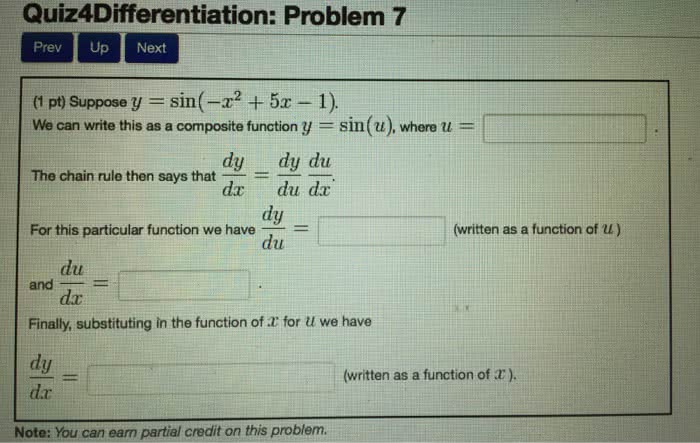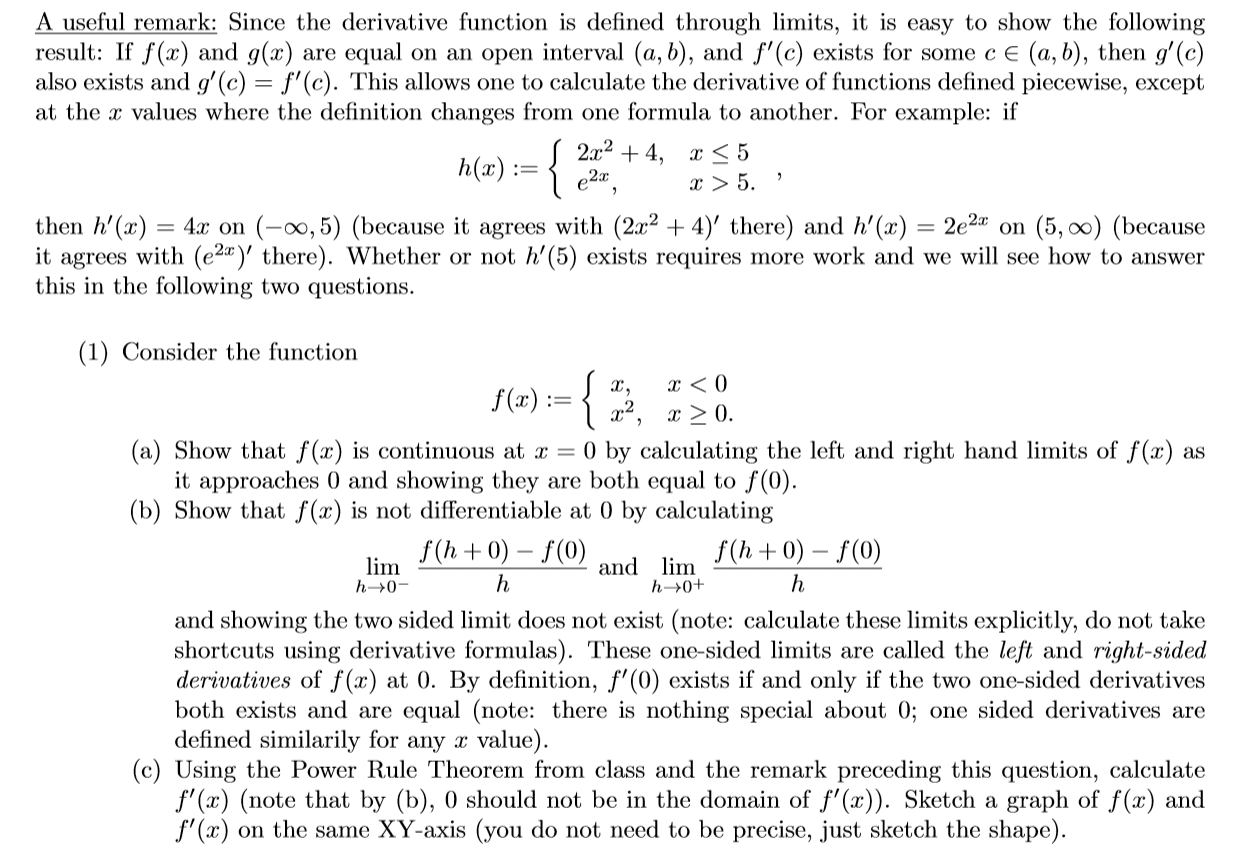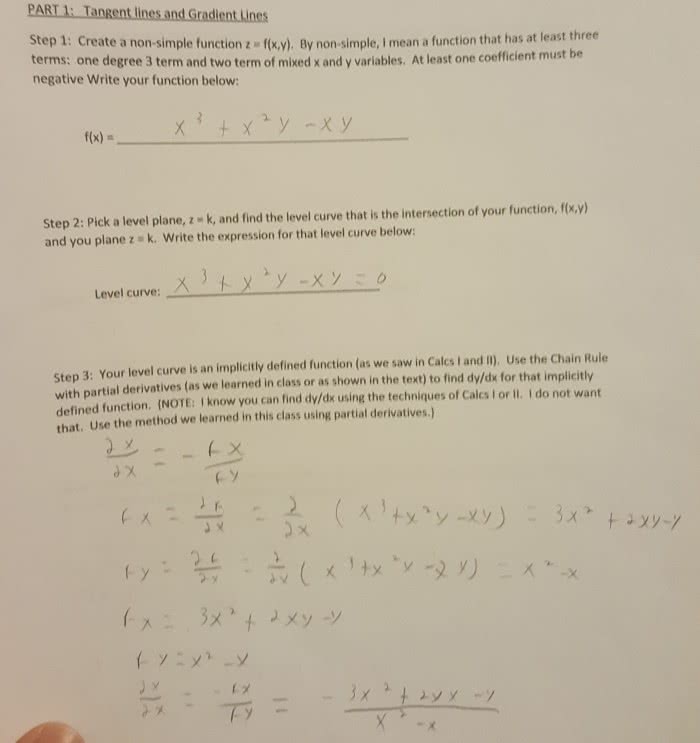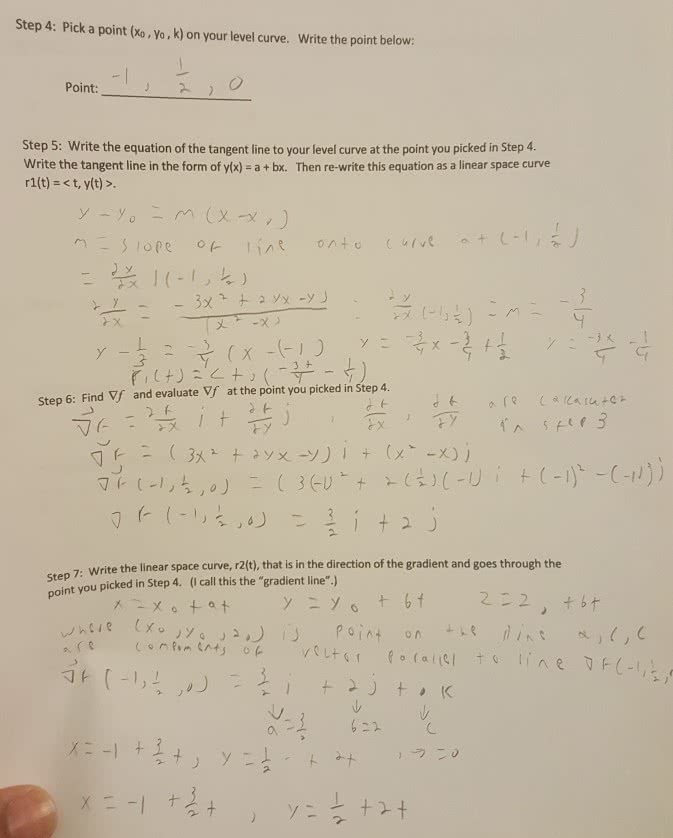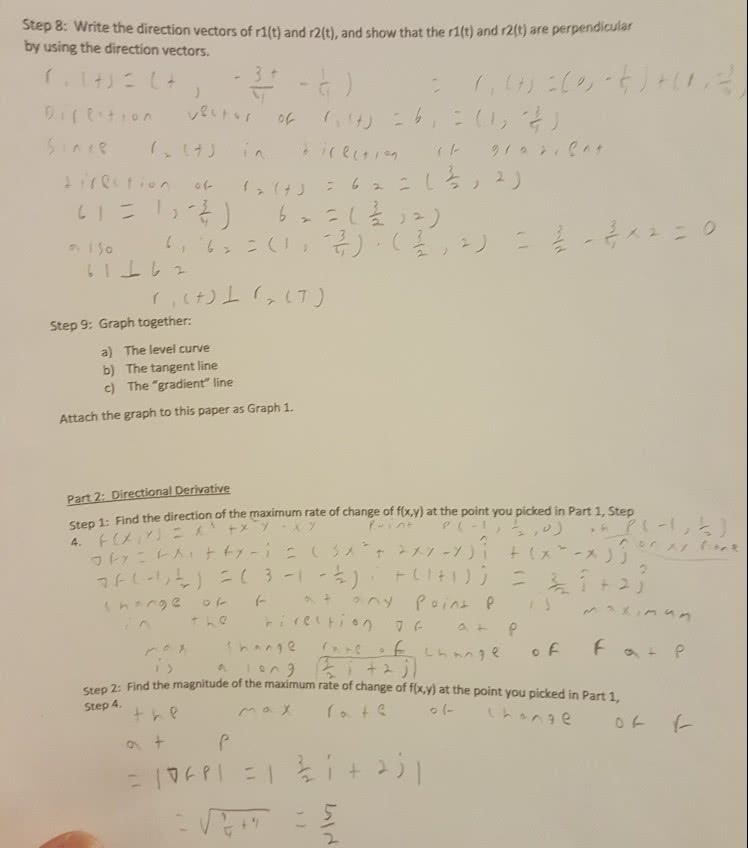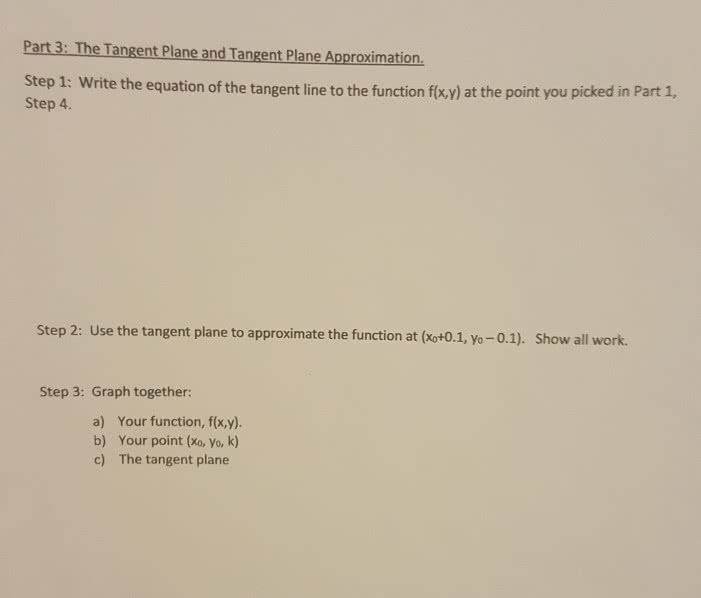Calculus 1000A/B Lecture Notes - Lecture 2: Function Composition, Power Rule

321
CALC 1000A/B Full Course Notes
Verified Note
321 documents
Document Summary
In really hard math-geek notation, we have the chain rule defined as: d dx f g(x) ) = f (g(x)) g (x) where the derivatives of f and g both exist and f(x) = f (g(x)) (which is to say that f(x) is a composite function. In leibnitz notation, we have dy dx dy du du dx where y=f (u) and u=g(x). F(x) = 2 x 2 + 3 can be thought of as a composite function where and. Therefore, f(x) = f (g(x)) = f (2x 2 + 3) = 2x 2 + 3 . To apply the chain rule, we take the derivative of the outside function and work to the inside. The power rule combined with the chain rule is not really any different than the chain. If we have a function raised to a power, we do the power first and then take the derivative of the function.


